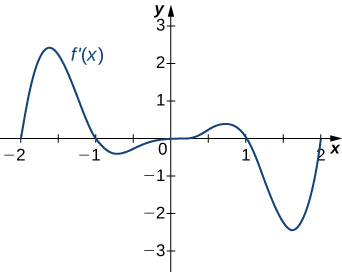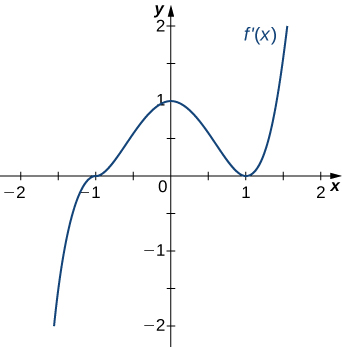| << Chapter < Page | Chapter >> Page > |
Consider the function The points satisfy Use the second derivative test to determine whether has a local maximum or local minimum at those points.
has a local maximum at and a local minimum at
We have now developed the tools we need to determine where a function is increasing and decreasing, as well as acquired an understanding of the basic shape of the graph. In the next section we discuss what happens to a function as At that point, we have enough tools to provide accurate graphs of a large variety of functions.
If is a critical point of when is there no local maximum or minimum at Explain.
For the function is both an inflection point and a local maximum/minimum?
It is not a local maximum/minimum because does not change sign
For the function is an inflection point?
Is it possible for a point to be both an inflection point and a local extrema of a twice differentiable function?
No
Why do you need continuity for the first derivative test? Come up with an example.
Explain whether a concave-down function has to cross for some value of
False; for example,
Explain whether a polynomial of degree can have an inflection point.
For the following exercises, analyze the graphs of then list all intervals where is increasing or decreasing.
For the following exercises, analyze the graphs of then list all intervals where

a. Increasing over decreasing over b. maxima at and minima at and and
For the following exercises, analyze the graphs of then list all inflection points and intervals that are concave up and concave down.

Concave up for and concave down for inflection points at and
For the following exercises, draw a graph that satisfies the given specifications for the domain The function does not have to be continuous or differentiable.
over over
over local maximum at local minima at
There is a local maximum at local minimum at and the graph is neither concave up nor concave down.
Answers will vary

Notification Switch
Would you like to follow the 'Calculus volume 1' conversation and receive update notifications?